Penn Central was created February 1, 1968 by merger of Pennsylvania and New York Central. Entered bankruptcy on June 21, 1970. Because of PC’s failure and its size, the federal government created Conrail, to which PC was conveyed on April 1, 1976.
Pennsylvania Railroad chartered April 13, 1846; by 1852, ran from Philadelphia to Pittsburgh. PRR extended its empire by leasing, acquiring, and consolidating other roads including Pittsburgh, Fort Wayne & Chicago; Pittsburgh, Cincinnati, Chicago & St. Louis (“Panhandle”); and Vandalia. PRR announced in 1957 its intent to merge with rival New York Central, and merger as Penn Central effected Feb. 1, 1968.
The Pennsylvania-Reading Seashore Lines was the jointly owned June 25, 1933, consolidation of Pennsylvania Railroad’s West Jersey & Seashore, which dated from 1896, and Reading Company’s Atlantic City Railroad, an 1883 narrow-gauge acquisition. PRSL was among the properties conveyed to Conrail on April 1, 1976.
Formed January 1, 1900, by consolidation of Chicago & West Michigan (which dated from 1872); Detroit, Grand Rapids & Western; and Flint & Pere Marquette. The Van Sweringen brothers of Cleveland acquired control in 1924, and their Chesapeake & Ohio took control in 1928. Pere Marquette was merged into C&O on June 6, 1947.
Piedmont & Northern was created in the 1914 consolidation of two physically separated 2-year-old Duke Power electric interurbans, Piedmont Traction Co. in North Carolina and Greenville, Spartanburg & Anderson in South Carolina. P&N replaced electric operation with diesel 1951-1958, and was acquired by Seaboard Coast Line on July 1, 1969.
Pittsburgh & Lake Erie was chartered in 1875. New York Central subscribed to 15% of the stock, gained control in 1889, and thereafter operated it as part of the NYC system. When successor Penn Central-which owned 92% of P&LE stock-went bankrupt in 1970, P&LE went independent, and in 1976 it stayed out of Conrail. New private owners, caught by the steel industry’s decline, offered P&LE for sale in the 1980’s. Several scenarios faltered over labor issues, and P&LE in 1991 sold part of its main line, on which B&O had been a long-time tenant, to CSX. On September 11, 1992, CSX bought the remainder through subsidiary Three Rivers Railway, later dissolved.
Line completed in 1904 by George Gould as the Wabash Pittsburgh Terminal Railway to link the Wheeling & Lake Erie in Ohio with Pittsburgh. WPTR was succeeded after receivership by Pittsburgh & West Virginia in 1916. P&WV leased by N&W in October 1964 in conjunction with the N&W merger of Nickel Plate Road; lease transferred to the new Wheeling & Lake Erie Railway on May 17, 1990, a spinoff by N&W successor Norfolk Southern.
Philadelphia & Reading chartered in 1833, opened in 1842, became a property of the holding firm Reading Company in an 1896 reorganization. (Note: Proper pronunciation is redding.) Reading entered bankruptcy in November 1971 and was among the properties conveyed to Conrail on April 1, 1976.
Richmond, Fredericksburg & Potomac began in 1834 at Richmond. Link to Washington completed in 1870 by a Pennsylvania Railroad subsidiary. On July 31, 1901, six connecting railroads gained equal interest of 64% of RF&P through newly created Richmond-Washington Company-PRR, ACL, B&O, C&O, SAL, and Southern-and the Washington-Quantico segment was turned over to RF&P. Through mergers, CSX came to own 80% of other roads’ RF&P stake and Norfolk Southern 20%; one-fourth had been owned since the beginning by Virginia, eventually through its Retirement System. In a complex deal involving the state that separated RF&P’s railroad and its real estate, CSX Transportation acquired the railroad and absorbed operations at the end of 1991.
Begun in Missouri as branch of Pacific Railroad in 1853. Name changed from Atlantic & Pacific to St. Louis-San Francisco-“Frisco” for short-as part of 1875 receivership. Acquired by Burlington Northern on November 21, 1980.
St. Louis Southwestern began as the 3-foot-gauge Tyler Tap Railroad, opened in 1877 in eastern Texas. Its successor, St. Louis, Arkansas & Texas, was standard-gauged in 1886. The nickname “Cotton Belt Route” is historic; the emblem, designed by Charles Ware at the railroad’s request, replaced a cotton bale in 1885. StLA&T was acquired by the new St. Louis Southwestern of Jay Gould in 1891. Southern Pacific acquired SSW control on April 14, 1932, strengthening a relationship established in 1919, and operated it as part of the SP system. Ownership conveyed to Union Pacific in the August 11, 1996 SP merger, and SSW was subsequently absorbed by UP.
Sacramento Northern, a vast San Francisco Bay Area interurban, was formed in 1918 to take over the Northern Electric Co., which dated from 1905. Western Pacific acquired control of SN in 1921 and gradually absorbed its functions and abandoned most of its lines. SN was still an entity when Union Pacific acquired WP, and SN, in 1982.
Construction began from Savannah as Brinson Railway in 1906. Savannah & Atlanta incorporated in 1915 as a connection. S&A purchased by Central of Georgia August 22, 1951 and merged into CofG in 1971.
Portsmouth & Roanoke Rail Road formed in 1832, reorganized as Seaboard & Roanoke in 1846. Several subsequent mergers, including the Raleigh & Augusta Air-Line being acquired by the Raleigh & Gaston in 1871, by 1881 created a collection known as Seaboard Air-Line System. Merger of Seaboard Air Line Railroad with paralleling Atlantic Coast Line, proposed in 1958, took place on July 1, 1967, creating Seaboard Coast Line.
Created July 1, 1967, by the merger of Seaboard Air Line and Atlantic Coast Line, under discussion for nine years. About 1974 SCL began advertising itself, Louisville & Nashville, Clinchfield, Georgia Railroad, and West Point Route as “Family Lines System,” but FLS was not a corporate entity. SCL and Chessie System became subsidiaries of CSX Corporation on November 1, 1980. Family Lines moniker was dropped when SCL and L&N merged on December 29, 1982, to form Seaboard System Railroad.
Seaboard System Railroad (SBD) was created on December 29, 1982, by the merger of Louisville & Nashville and Seaboard Coast Line. SBD was absorbed by CSX Transportation on July 1, 1986.
Minneapolis, Sault Ste. Marie & Atlantic was incorporated in 1883 to build from the Twin Cities east to a connection with Canadian Pacific. In 1888 MSSM&A, Minneapolis & Pacific, and two others consolidated to form the Minneapolis, St. Paul, & Sault Ste. Marie. The nickname “Soo Line” comes from the pronunciation of the word Sault. On December 31, 1960, MStP&SSM merged with subsidiaries Wisconsin Central Railroad and Duluth, South Shore & Atlantic to form Soo Line Railroad. CP for decades owned 56% of Soo, and tried in the 1980’s to sell it, but in 1990 wound up acquiring full ownership. Soo remains a CP subsidiary but is operated as part of the system.
First ancestor, South Carolina Canal & Rail Road Company, was completed from Charleston to Hamburg in 1833. Southern Railway was chartered in 1894. Under Southern Railway System, many components retained a corporate identity (e.g., Alabama Great Southern; Cincinnati, New Orleans & Texas Pacific; New Orleans & Northeastern). Southern merged with Norfolk & Western Railway on June 1, 1982, to form the Norfolk Southern Railway, a component of Norfolk Southern Corp.
First SP ancestor chartered in Texas in 1851. Sacramento Valley opened in California in 1851. Central Pacific incorporated in June 1861, connected its line to Promontory, Utah, with Union Pacific to form first transcontinental railroad May 10, 1869. San Francisco & San Jose opened in 1864 and was merged by Southern Pacific. CP acquired SP by 1868. Four Texas properties consolidated in 1934 as Texas & New Orleans. T&NO was merged into SP in 1961. Anschutz Corp., owner of Denver & Rio Grande Western, purchased SP on August 8, 1988, retained Southern Pacific Lines as system name. Union Pacific acquired control of SP on September 11, 1996.
Spokane International was built from its namesake Washington city to a connection with Canadian Pacific at the Idaho-British Columbia border in 1906. Union Pacific acquired control of SI on October 6, 1958.
Incorporated by James J. Hill in 1905 as Portland & Seattle. Name changed to Spokane, Portland & Seattle in 1908. SP&S was financed and owned jointly by Hill’s GN and NP. Absorbed in March 1, 1970 Burlington Northern merger, along with Chicago, Burlington & Quincy; Great Northern; and Northern Pacific.






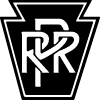
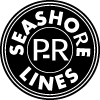
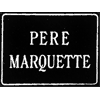
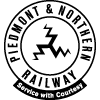

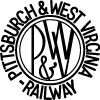
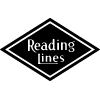
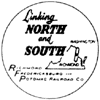
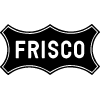
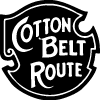
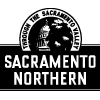
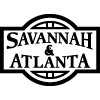
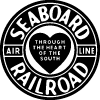
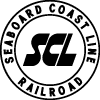


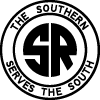
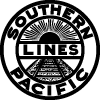
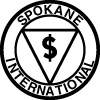
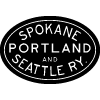









“CP [Central Pacific] acquired SP by 1868”?? Either you meant to say “CP acquired _by_ SP”, or you left out a milestone which would explain why the 20th-century company was named “SP” and not “CP”.